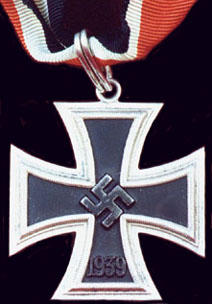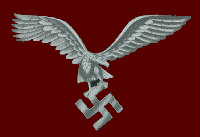|
|
|
 |
 |
Gallands Luftwaffe |
 |
 |
General
der Jagdeflieger
|
In 1941, Gallands friend Moelders was killed in an air crash, and Galland was nominated to be his successor as Inspector General of Fighters. In December he was promoted to Oberst and in January 1942, with his personal score at 94, he was awarded the Diamonds to his Knights Cross , Oak Leaves & Swords. His rise to the heights of command increased steadily and in November 1941 at the age of 30, he became the youngest General in the German armed forces with the rank of Generalmajor. Galland was never frightened to stand up for his pilots and speak his mind - a dangerous thing even for a General to do in Nazi Germany .This led to many confrontations with Goering. On one occasion when the Reichsmarsclall accused pilots of faking combat claims, Galland removed his decorations from his tunic, handed them to Goering and refused to wear them for a period of nearly a year. |
|
Adolf Galland finally fell from grace in late 1944 when he violently opposed the planned New Year`s Day operation against Allied airfields. He claimed that the fighters involved would be better defending the Reich than trying to carry the fight to the enemy airfields. The loss of over 300 German fighters on Operation Bodenplatte on 1 January, 1945 probably proved his point. Although dismissed from his position of General der Flieger, his skills as a pilot were still highly regarded and in January he was ordered to gather the top Luftwaffe fighter pilots into one unit to fly the new jet-powered ME 262 into combat. |
|
Even with 104 kills to his credit,
Galland was not among the top-scoring German aces but it
must be remembered that all his victories were against
Commonwealth or American pilots and for long periods he
was not in combat situations. He served in the reformed
Luftwaffe in 1956 and became highly respected among his
former adversaries.
He struck up firm and lasting friendship with the late Sir Douglas Bader whom Galland`s JG 26 had shot down in 1941, the late Bob Stanford-Tuck and many other British aces and ordinary aircrew. His leadership was superb and there can be little doubt that he was one of the greatest fighter pilots of the war.He was operational on the first and practically the last day of the conflict, flying a total of over 400 missions in addition to those flown in Spain. |